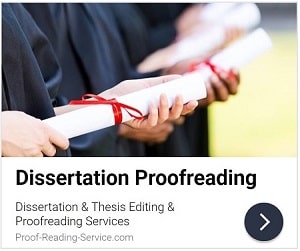Introduction
Publishing a journal article is a crucial milestone for researchers, scholars, and academics. It requires careful planning, structured writing, and adherence to journal guidelines. The process can be overwhelming, but following a clear, step-by-step approach simplifies the journey. This article outlines twelve essential steps to writing a journal article, from conceptualization to submission and revision.
Step 1: Choose the Right Journal
Selecting the right journal is the foundation of successful publication. Before writing, consider:
- Journal Scope: Ensure your research aligns with the journal’s themes and subject areas.
- Impact Factor & Reputation: High-impact journals have rigorous standards, while niche journals may offer quicker acceptance.
- Open Access vs. Subscription-Based: Decide whether you want your article freely accessible or published in a traditional subscription model.
- Journal Guidelines: Each journal has specific formatting, referencing, and submission requirements.
Using journal finder tools like Elsevier’s Journal Finder or Springer’s Journal Suggester can help identify the most suitable journals.
Step 2: Define Your Research Question
A strong research question provides clarity and focus. To refine your question:
- Ensure it is specific, clear, and researchable.
- Identify the gap in the literature your study will address.
- Align it with your research objectives and methodology.
Clearly articulating your research question will guide the structure and argument of your article.
Step 3: Conduct a Thorough Literature Review
A comprehensive literature review helps contextualize your research. Follow these steps:
- Gather Recent Studies: Use databases like Google Scholar, PubMed, or Scopus.
- Identify Theoretical Frameworks: Recognize existing theories that relate to your research.
- Summarize Key Findings: Highlight how your study builds on or differs from past research.
- Cite Correctly: Use citation management tools like EndNote or Mendeley to format references properly.
Your literature review should highlight why your research is relevant and how it contributes to existing knowledge.
Step 4: Develop a Clear Outline
Before writing, create an outline to structure your paper effectively. A standard journal article follows this format:
- Title – Concise and informative.
- Abstract – A summary of objectives, methods, findings, and conclusions.
- Introduction – Background, problem statement, and research question.
- Methods – Description of research design, data collection, and analysis.
- Results – Presentation of findings.
- Discussion – Interpretation of results and comparison with previous research.
- Conclusion – Summary and implications of the study.
- References – Properly formatted citations.
Having an outline keeps your writing focused and logical.
Step 5: Write a Compelling Title and Abstract
The title and abstract are the first things readers and reviewers see. Make them impactful:
- Title: Keep it clear, specific, and relevant to the study’s main findings.
- Abstract: Summarize the research question, methodology, key findings, and conclusions in 150–250 words.
- Keywords: Select 3–5 keywords to improve searchability.
An engaging abstract increases the chances of your article being read and cited.
Step 6: Craft a Strong Introduction
The introduction should:
- Present the background and context of the study.
- Clearly define the research problem and objectives.
- Explain the significance of the study.
- End with a brief overview of the article structure.
A well-written introduction sets the stage for the rest of the paper.
Step 7: Describe the Methods in Detail
The methodology section should be precise and replicable. Include:
- Study Design: Explain the approach (qualitative, quantitative, mixed methods).
- Data Collection: Detail how data was gathered (surveys, experiments, interviews, etc.).
- Analysis Techniques: Describe statistical or qualitative analysis methods.
- Ethical Considerations: Mention any ethical approvals or participant consent processes.
A transparent methods section builds credibility and allows for reproducibility.
Step 8: Present Clear and Concise Results
The results section should focus on findings without interpretation. Include:
- Tables, charts, and figures to enhance clarity.
- Clear data presentation with relevant statistical values.
- Objective reporting, avoiding discussion or speculation.
Use visuals effectively to communicate complex results efficiently.
Step 9: Write a Thoughtful Discussion
The discussion section interprets the findings. Address:
- How your results answer the research question.
- Comparison with previous research.
- Possible explanations for unexpected results.
- Study limitations and future research recommendations.
A strong discussion links results to broader academic conversations and practical applications.
Step 10: Conclude with Impact
The conclusion should:
- Summarize the key findings.
- Reiterate the study’s contribution.
- Highlight practical implications.
- Suggest directions for future research.
Avoid introducing new data or overly speculative statements in the conclusion.
Step 11: Format References Correctly
Incorrect referencing can lead to rejection. Ensure:
- All sources cited in-text are included in the reference list.
- The reference style matches the journal’s guidelines (APA, MLA, Chicago, etc.).
- Citation software is used for accuracy and consistency.
Well-organized references reflect academic integrity and professionalism.
Step 12: Revise, Edit, and Proofread
Before submission:
- Revise for Clarity: Ensure logical flow and coherence.
- Check Grammar and Style: Use tools like Grammarly or professional editing services.
- Peer Review: Seek feedback from colleagues.
- Follow Journal Submission Guidelines: Double-check formatting, word limits, and figure placements.
A thoroughly edited manuscript increases acceptance chances.
Conclusion
Writing a journal article requires patience, precision, and persistence. By following these twelve essential steps—choosing the right journal, developing a strong structure, and refining through revisions—you can enhance your manuscript’s quality and improve its chances of publication.
Remember, successful publication is not just about great research but also about effective communication. Stay focused, seek feedback, and keep refining your work until it meets the highest academic standards. With dedication and the right approach, your article can contribute meaningfully to your field and reach a wider audience.














